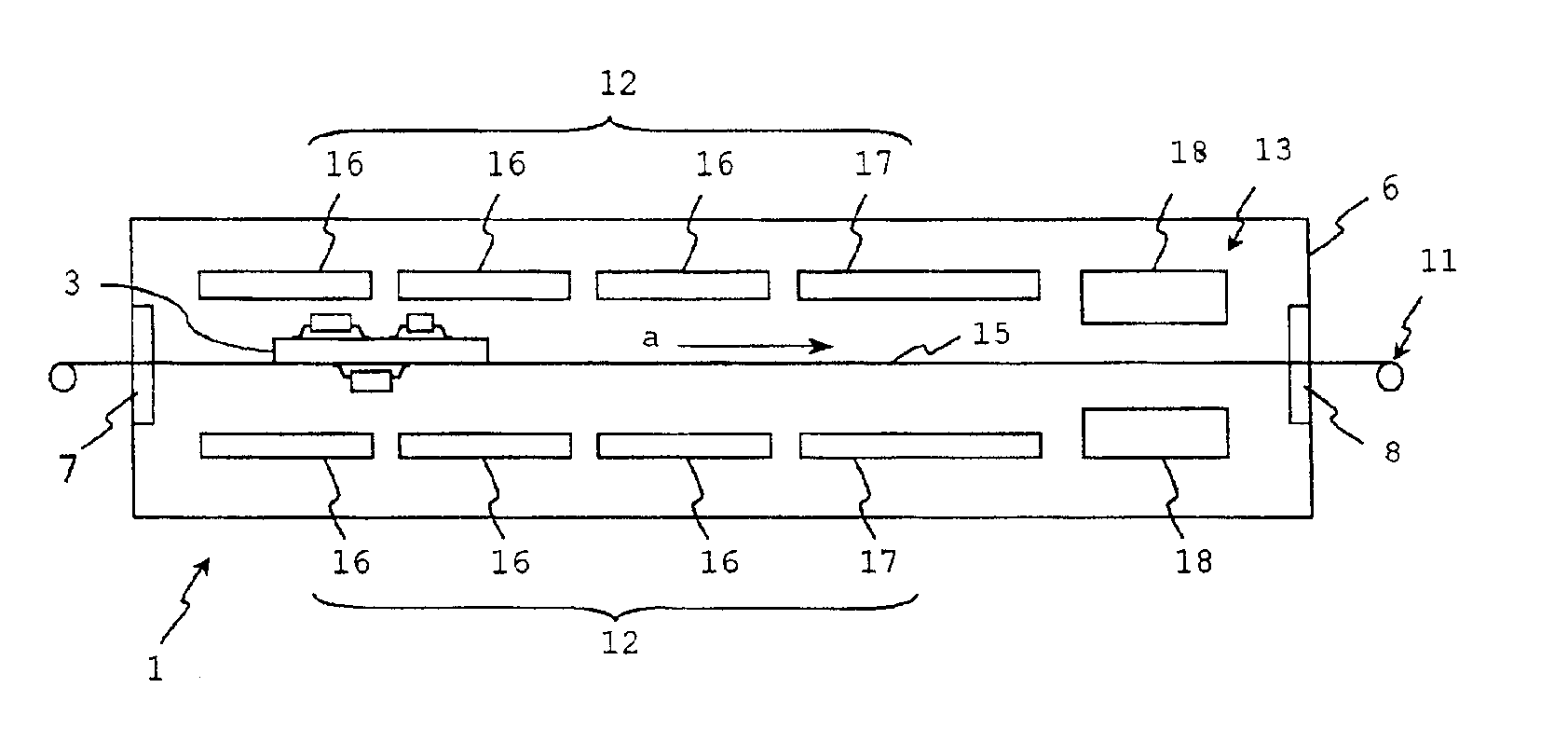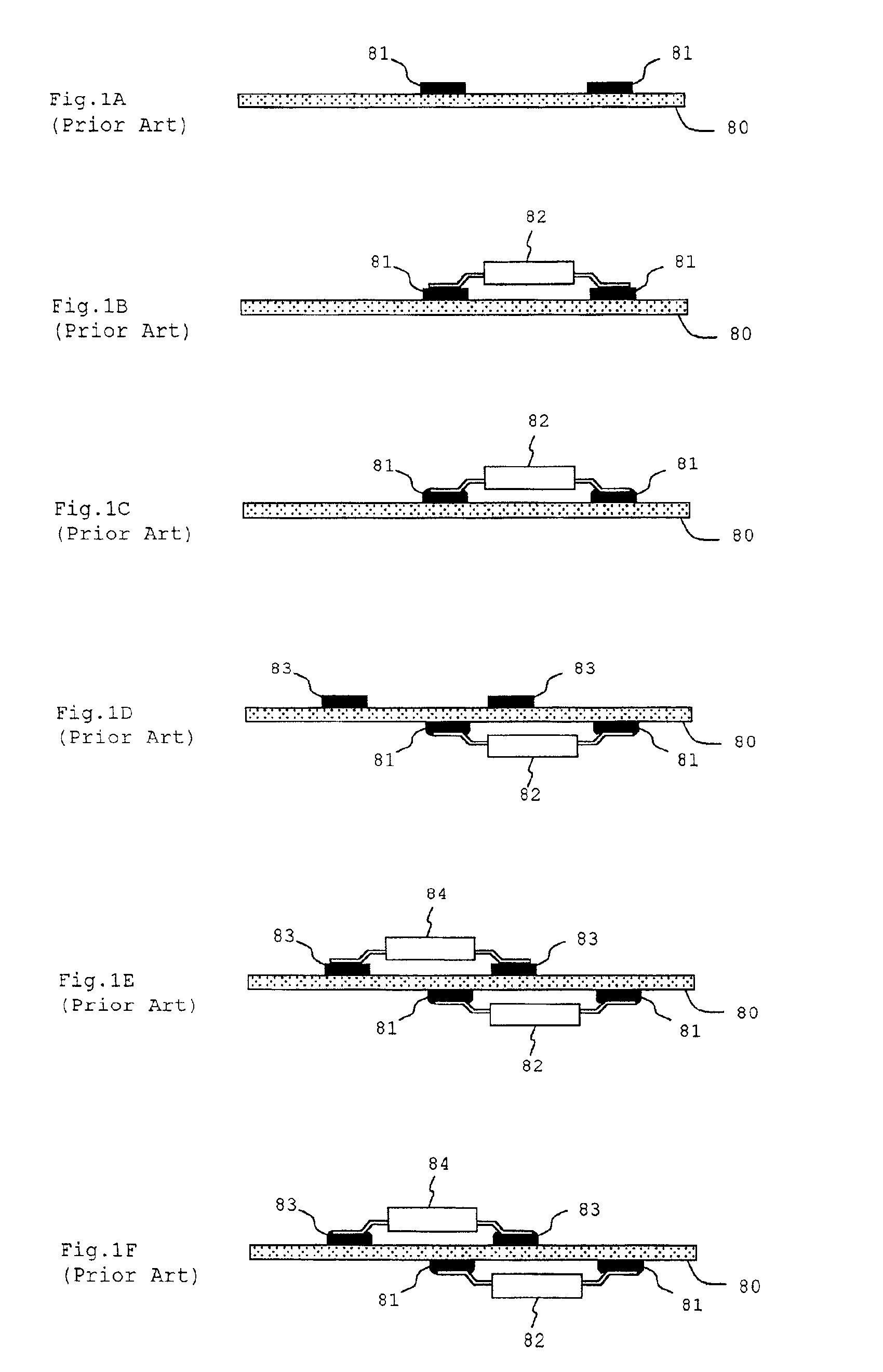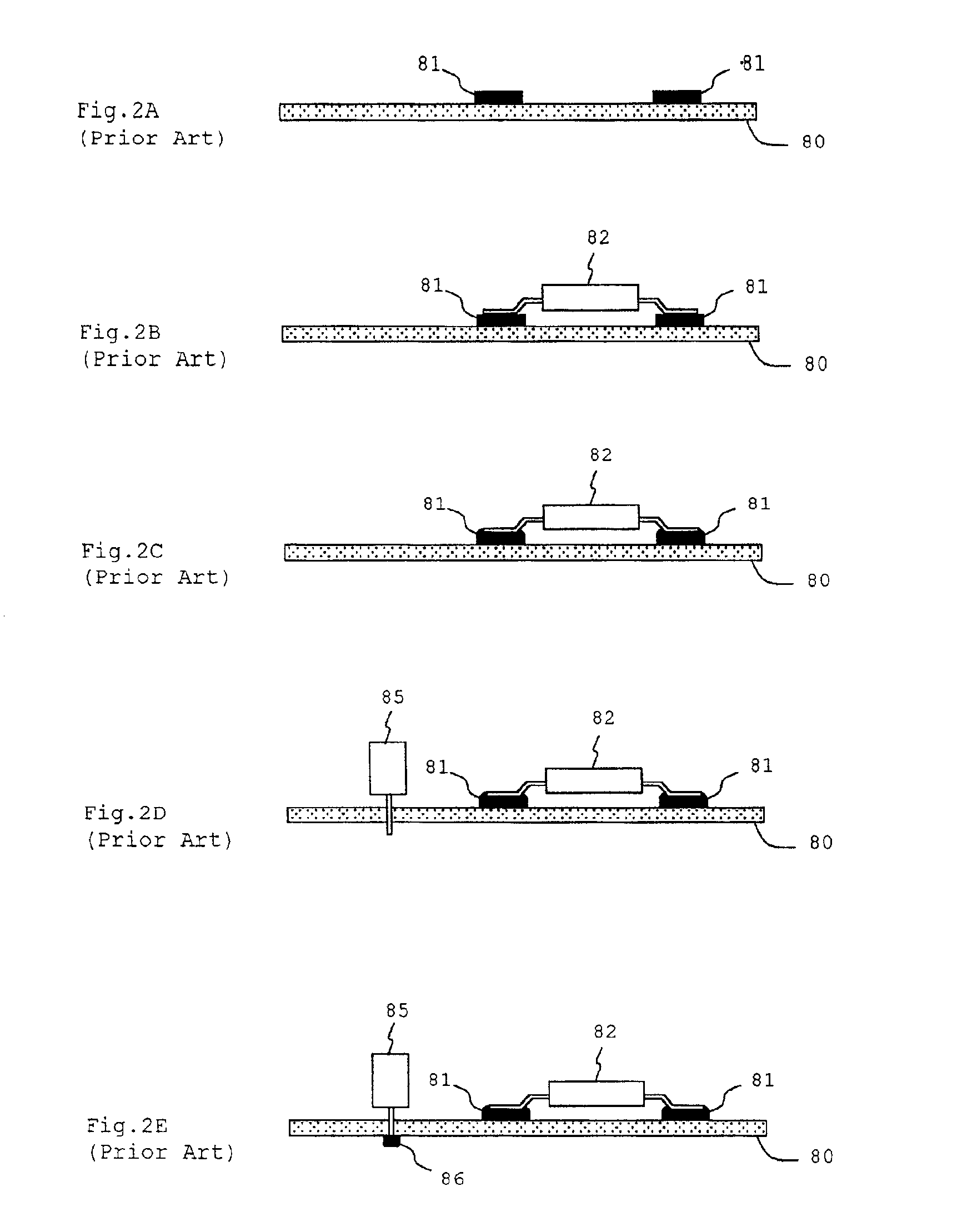Method of manufacturing mount structure without introducing degraded bonding strength of electronic parts due to segregation of low-strength/low-melting point alloy
a technology of low-strength/low-melting point alloy and manufacturing method, which is applied in the manufacture of final products, manufacturing tools, metal working equipment, etc., can solve the problems of adversely affecting the earth environment, inability to withstand high temperature, and difficulty in using mounting apparatus and mounting method for use with sn, so as to ensure the quality and reliability of solder-based bonding
- Summary
- Abstract
- Description
- Claims
- Application Information
AI Technical Summary
Benefits of technology
Problems solved by technology
Method used
Image
Examples
first embodiment
[0050]In a first embodiment, a mount structure is manufactured by a double-sided reflow process for soldering electronic parts on both sides of a PCB by reflowing.
[0051]A reflow apparatus for use in the reflow processing according to the first embodiment applies the reflow processing to a PCB which has a variety of electronic parts mounted on a solder paste printed on lands in a preceding step. The reflow apparatus employs an Sn—Zn—Bi based alloy, which is an Sn—Zn based alloy containing Bi, as the solder paste. An electronic part having leads covered with a plating film containing Pb is used as one of the electronic parts mounted on the PCB.
[0052]As illustrated in FIG. 3, reflow apparatus 1 for use in the reflow processing according to the first embodiment comprises furnace 6 for performing the reflow processing on PCB 3. Furnace 6 is provided with an inlet port 7 at one end side for introducing PCB 3 subjected to the reflow processing, and an outlet port 8 on the other end side fo...
second embodiment
[0096]In a second embodiment, a mount structure is manufactured by a reflow / flow composite process for soldering electronic parts by reflowing on one side of PCB 3 and subsequently soldering electronic parts by flowing on the other side of PCB 3.
[0097]A flow apparatus for use in the flow processing according to the second embodiment applies the flow processing to a PCB which has throughholes through which leads of a variety of electronic parts are inserted to load the electronic parts on the PCB. As a solder for use in the flow processing, an Sn—Ag based alloy, an Sn—Cu based alloy, an Sn—Zn based alloy and the like are preferably used from a viewpoint Pb-free promotion. Also, used as electronic parts mounted on the PCB are those electronic parts which have leads covered with a plating film containing Pb.
[0098]As illustrated in FIG. 7, flow apparatus 20 for use in the flow processing according to the second embodiment comprises a furnace 21 for performing the flow processing on PCB ...
PUM
| Property | Measurement | Unit |
|---|---|---|
| temperatures | aaaaa | aaaaa |
| melting point | aaaaa | aaaaa |
| melting point | aaaaa | aaaaa |
Abstract
Description
Claims
Application Information
 Login to View More
Login to View More - R&D Engineer
- R&D Manager
- IP Professional
- Industry Leading Data Capabilities
- Powerful AI technology
- Patent DNA Extraction
Browse by: Latest US Patents, China's latest patents, Technical Efficacy Thesaurus, Application Domain, Technology Topic, Popular Technical Reports.
© 2024 PatSnap. All rights reserved.Legal|Privacy policy|Modern Slavery Act Transparency Statement|Sitemap|About US| Contact US: help@patsnap.com










